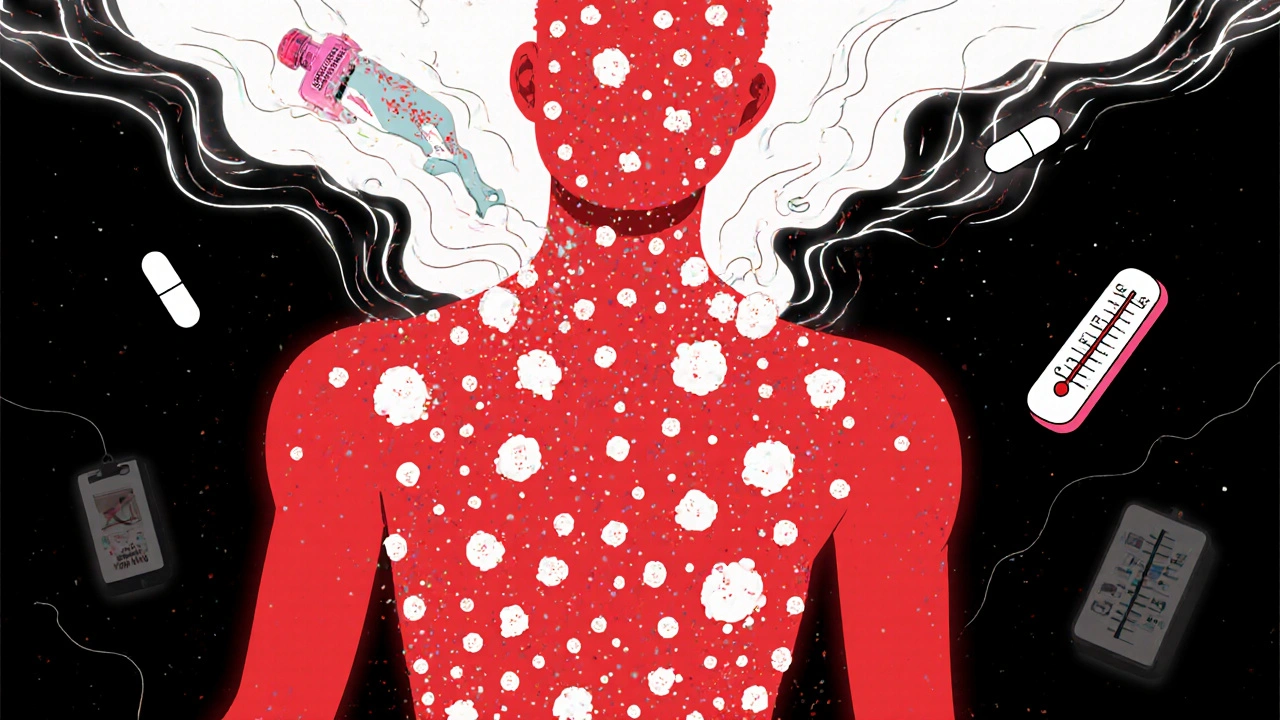Cutaneous Adverse Reaction: What You Need to Know About Skin Reactions to Medications
When your skin breaks out in a rash after taking a new pill, it’s not always just a coincidence. A cutaneous adverse reaction, a skin response triggered by medication that can range from mild itching to life-threatening blistering. Also known as drug rash, it’s one of the most frequent reasons people stop taking prescribed drugs—even when those drugs are working fine. This isn’t just a nuisance. Misidentifying a cutaneous adverse reaction as a simple irritation can lead to dangerous repeats, unnecessary tests, or even wrong diagnoses like autoimmune disease.
Not all skin reactions are allergies. A drug rash, a visible skin response caused by medication exposure. Also known as cutaneous adverse reaction, it can be a side effect, a true immune response, or something in between. For example, penicillin can cause a true allergic reaction with hives and swelling, while ibuprofen might just cause a flat, red rash that fades when you stop taking it. The difference matters because labeling a side effect as an allergy can limit your future treatment options. Many people think they’re allergic to penicillin when they’re not—this mislabeling happens in up to 90% of cases. That’s why knowing the exact type of reaction helps doctors pick safer alternatives.
Some drugs are far more likely to trigger these reactions. Antibiotics like sulfa drugs, anticonvulsants like carbamazepine, and painkillers like NSAIDs show up often in reports. Even common meds like statins or antidepressants can cause rashes in sensitive people. What’s worse? Some reactions don’t show up right away. You might take a drug for weeks before your skin starts reacting. That’s why tracking new medications and any skin changes is critical. If you’ve ever had a cutaneous adverse reaction, keep a note—what drug, when it started, what it looked like. That info could save your life next time.
What you’ll find below are real stories and clear breakdowns from people who’ve dealt with this firsthand. From how to tell a harmless flush from a dangerous blistering rash, to which medications are most risky, to what steps to take when your skin turns red and itchy—this collection cuts through the noise. No fluff. No jargon. Just what you need to recognize, respond to, and prevent these reactions before they escalate.
Acute Generalized Exanthematous Pustulosis (AGEP): What You Need to Know About This Rapid-Onset Drug Rash
AGEP is a rare but serious drug rash that causes sudden, widespread pustules on red skin. It requires immediate discontinuation of the triggering medication and often resolves within two weeks. Learn the signs, causes, and treatment options.
More
